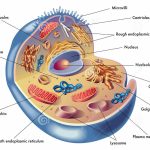Are You A Brain?
Remarkably, neuroscience tells us three things about the mind: the mind is metaphysically simple, the intellect and will are immaterial, and free will is real.
In the middle of the twentieth century, neurosurgeons discovered that they could treat a certain kind of epilepsy by severing a large bundle of brain fibers, called the corpus callosum, which connects the two hemispheres of the brain. Following these operations, each hemisphere worked independently. But what happened to the mind of a person with his or her brain split in half?
The neuroscientist Roger Sperry studied scores of split-brain patients. He found, surprisingly, that in ordinary life the patients showed little effect. Each patient was still one person. The intellect and will – the capacity to have abstract thought and to choose – remained unified. Only by meticulous testing could Sperry find any differences: their perceptions were altered by the surgery. Sensations – elicited by touch or vision – could be presented to one hemisphere of the brain, and not be experienced in the other hemisphere. Speech production is associated with the left hemisphere of the brain; patients could not name an object presented to the right hemisphere (via the left visual field). Yet they could point to the object with their left hand (which is controlled by the right hemisphere). The most remarkable result of Sperry’s Nobel Prize–winning work was that the person’s intellect and will – what we might call the soul – remained undivided.
The brain can be cut in half, but the intellect and will cannot. The intellect and will are metaphysically simple.
One of the neurosurgeons who pioneered the corpus callosotomy for epilepsy patients was Wilder Penfield, who worked in Montreal in the middle of the twentieth century. Penfield studied the brains and minds of epileptic patients in a remarkably direct way, in the course of treating them. He operated on people who were awake. The brain itself feels no pain, and local anesthetics numb the scalp and skull enough to permit painless brain surgery. Penfield asked them to do and think things while he was observing and temporarily stimulating or impairing regions of their brains. Two things astonished him.
First, he noticed something about seizures. He could cause seizures by stimulating the brain. A patient would jerk his arm, or feel tingling, or see flashes of light, or even have memories. But what he could never do was cause an intellectual seizure: the patient would never reason when his brain was stimulated. The patient never contemplated mercy or bemoaned injustice or calculated second derivatives in response to brain stimulation. If the brain wholly gives rise to the mind, why are there no intellectual seizures?
Second, Penfield noted that patients always knew that the movement or sensation elicited by brain stimulation was done to them, but not by them. When Penfield stimulated the arm area of the brain, patients always said, “You made my arm move” and never said, “I moved my arm.” Patients always retained a correct awareness of agency. There was a part of the patient – the will – that Penfield could not reach with his electrode.
Penfield began his career as a materialist. He finished his career as an emphatic dualist. He insisted that there is an aspect of the self – the intellect and the will – that is not the brain, and that cannot be elicited by stimulation of the brain.
Some of the most fascinating research on consciousness was done by Penfield’s contemporary Benjamin Libet at the University of California, San Francisco. Libet asked: What happens in the brain when we think? How are electrical signals in the brain related to our thoughts? He was particularly interested in the timing of brain waves and thoughts. Did a brain wave happen at the same moment as the thought, or before, or after?
It was a difficult question to answer. It wasn’t hard to measure electrical changes in the brain: that could be done routinely by electrodes on the scalp, and Libet enlisted neurosurgeons to allow him to record signals deep in the brain while patients were awake. The challenge Libet faced was to accurately measure the time interval between the signals and the thoughts. But the signals last only a few milliseconds, and how can you time a thought with that kind of accuracy?
Libet began by choosing a very simple thought: the decision to press a button. He modified an oscilloscope so that a dot circled the screen once each second, and when the subject decided to push the button, he or she noted the location of the dot at the time of the decision. Libet measured the timing of the decision and the timing of the brain waves of many volunteers with accuracy in the tens of milliseconds. Consistently he found that the conscious decision to push the button was preceded by about half a second by a brain wave, which he called the readiness potential. Then a half-second later the subject became aware of his decision. It appeared at first that the subjects were not free; their brains made the decision to move and they followed it.
But Libet looked deeper. He asked his subjects to veto their decision immediately after they made it – to not push the button. Again, the readiness potential appeared a half-second before conscious awareness of the decision to push the button, but Libet found that the veto – he called it “free won’t” – had no brain wave corresponding to it.
The brain, then, has activity that corresponds to a pre-conscious urge to do something. But we are free to veto or accept this urge. The veto, and implicitly the acceptance, is an immaterial act of the will.
Libet noted the correspondence between his experiments and the traditional religious understanding of human beings. We are, he said, beset by a sea of inclinations, which we have the free choice to reject or accept. It is hard not to read this in more familiar terms: we are tempted by sin, yet we are free to choose.We are composites of matter and spirit. We have spiritual souls.



